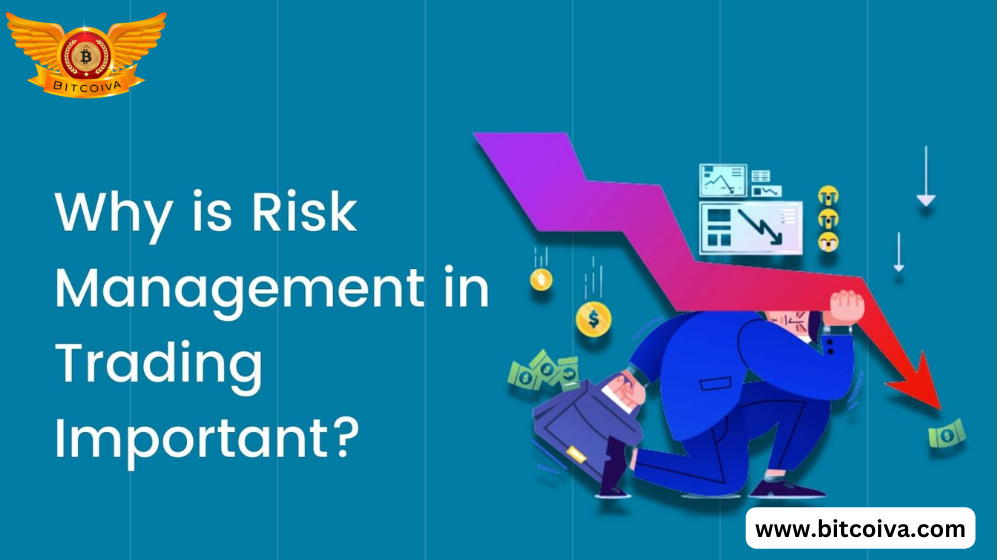We discussed typical mistakes that novices should avoid in order to succeed in the long run. In that spirit, today’s post delves deeper into risk management and identifies the ideal risk-reward ratio for cryptocurrency traders.
You must be prepared to overcome any predicament when trading in Crypto Platform India. Although your trading ideas (what you anticipate will happen) are crucial, you should also have contingency plans in place in case the trade goes against you. New traders frequently fail to account for this and wind up improvising when the trade swings the other way.
Most experienced traders are prepared for this circumstance. When they realise they were wrong, they close their position. Manually closing failed trades can be difficult on your emotions; consequently, many traders utilise stop loss to accomplish it automatically.
What Exactly Is Risk Management?
Risk management is a technique, or combination of procedures, for reducing losses and protecting traders like Jake from fully losing their accounts and having to return to work at McDonald’s. Jake is a 24-year-old beginner trader who is attempting to establish his risk management strategy.
Sometimes trading is for survival rather than profit. You protect yourself from adverse market situations by managing your losses. A smaller risk will also limit the quantity of your wins, but if you gradually increase your account, the compounding benefits will ultimately kick in.
How Can I Put Risk Management into Action?
Risk management is built on three pillars:
How much money are you willing to put on the line in a single trade? (Explain risk)
What amount of money are you willing to trade? (Portfolio Dimensions)
How much do you spend on a single trade? (risk-reward)
Let’s go through them one by one.

Defined Risk: How Much Money Can You Lose on a Single Trade?
Choosing how much of your portfolio to risk on a single trade is an important step in risk management. You want to be able to sustain numerous losing trades in a row.
As a result, many traders choose to restrict their risk to a single percent of their whole trading portfolio in order to avoid losing too much of their stack during losing streaks. It is important to determine how much money you are willing to risk. We frequently use the following example: a losing trade should be equivalent to the cost of a dinner out in your town for you and your significant other.
Portfolio Size: How Much Money Will You Trade?
The second step in the risk management path is determining the size of the portfolio you will trade. Most experienced traders maintain their long-term assets separate from the Crypto Exchange Platform trading stack. This helps you to see your portfolio objectively: you can leave your long-term bags alone while focusing on active transactions.
Choosing how much money to trade is a difficult task. This author feels that the approach outlined in the previous section should be used to establish the size of your initial portfolio.
We can readily calculate Jake’s portfolio size by looking at his decisions. He determines that he will need to fund his portfolio by $10,000 by multiplying his maximum losses by 100.
Because he limits his risk to 1%, we multiply it by hundred. For a 0.5% risk, multiply that by 200. You can adjust the account size by modifying the risk figures. Just remember to keep your emotions in check!
How Much Money Do You Put Into a Single Trade?
Let’s talk about risk-reward and position sizing now that we know Jake’s portfolio size and maximum risk capacity per transaction.
To begin, risk-reward is the ratio of Jake’s prospective gains (reward) to the $100 he is willing to risk. Given your average win rate, your risk-reward ratio should ensure that you trade profitably. Jake should take trades with a risk-reward ratio of at least 1:1 if he has a 50% win record. Higher risk-reward ratios will make him profitable.
Because different methods may have varied win rates, alter your risk/reward ratio and position sizes accordingly. Trading view includes long and short position tools to help you locate trades that match your risk profile. As you can see, the risk-to-reward ratio for the India Top Cryptocurrency Exchanges Ethereum trade above is exactly two.
This tool can also assist you in determining the size of your position. We can provide all of the essential inputs to the tool by double-clicking the deal we just drew. As you can see, we’ve entered Jake’s account amount of $10,000 and set the risk at 1%.
Following these inputs, the tool will calculate the position size (in units or shares) for the trade you’ve drawn. You will be able to see the impact of both winning and losing. In this situation, Jake can accept the deal for 14.38 Ethereum. If he is correct, he will get $200. He will, however, only lose $100 if he is incorrect.
Crypto Currency Trading Platform becomes easier when you set clear winning and losing goals based on your performance from the start. Your account will grow as long as you stick to your plan and keep fine-tuning it based on changing win rates and account sizes.
Final Thoughts
Risk management shields you from negative market developments and secures your survival. It enables you to trade in a methodical manner and develop your trading account.
Remember that in order to accurately manage risk, you must track your performance over time. Journaling your trades is a wonderful practice that can greatly benefit you.
Visit us on : www.bitcoiva.com

